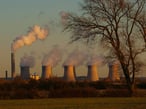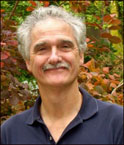 Last month I blogged about basic provisions of the Montreal Protocol on Substances that Deplete the Ozone Layer, and ongoing negotiations to expand it to require phaseout of chemicals that harm the stratospheric ozone layer and contribute to climate change (click here, and included links to early blogs on Montreal Protocol issues). At that time, proposals all focused on hydrofluorocarbons (HFCs). At that point, global HFC use was increasing by roughly 10% annually, driven primarily by expanding use for air conditioning as hot developing countries sought to catch up with comfort levels in their developed counterparts. Proposed timelines and end-targets for reversing that expansion varied considerably.
Last month I blogged about basic provisions of the Montreal Protocol on Substances that Deplete the Ozone Layer, and ongoing negotiations to expand it to require phaseout of chemicals that harm the stratospheric ozone layer and contribute to climate change (click here, and included links to early blogs on Montreal Protocol issues). At that time, proposals all focused on hydrofluorocarbons (HFCs). At that point, global HFC use was increasing by roughly 10% annually, driven primarily by expanding use for air conditioning as hot developing countries sought to catch up with comfort levels in their developed counterparts. Proposed timelines and end-targets for reversing that expansion varied considerably.
Earlier this month the parties to the Montreal Protocol met in Kigali, Rwanda and reached a deal. As should be expected from negotiations with nearly 200 parties, the result is a complicated compromise. However, implementation of the Kigali compromise would significantly reduce emissions of these greenhouse gases (GHGs) and perhaps mute climate change – the United Nations claims these changes would prevent up to 0.5 degrees Celsius of global warming by 2100.
Three Pathways For Three Sets Of Countries
The key to the international compromise was to divide countries into three groups, with different schedules and targets:
-
Developed nations including the United States - consumption will be cut to 90% of 2011-2013 baseline of most HFCs (plus 15% of those already covered by the Protocol) in 2019, declining to 15% by 2036.
-
Most developing nations, including China and over 100 others - consumption to peak in 2024 at 100% of 2020-2022 baseline of most HFCs (plus 25% of those already covered by the Protocol), declining to 20% by 2045.
-
10 hot-climate developing countries, including India, Pakistan and some Gulf states - consumption to peak in 2028 at 100% of 2024-2026 baseline of most HFCs (plus 25% of those already covered by the Protocol), declining to 15% by 2047.
The delay allows developing countries more time to cap their emissions, and higher caps relative to baselines. Separate provisions address trade with non-parties, beginning in 2029.
Provisions For Financial Assistance
Countries also agreed to provide adequate financing for HFCs reduction. This will surely cost billions of dollars, but the actual amount of additional funding has been deferred for agreement at the next formal meeting of parties to the Protocol, in Montreal in 2017. Grants for research and development of affordable alternatives to hydrofluorocarbons will be the most immediate priority.
What Now?
This Amendment will enter into force on 1 January 2019, provided that at least twenty instruments of ratification have been filed by countries or regional groupings (such as the European Union). Observers have noted that this low hurdle would bind the United States even without approval by the U.S. Senate (since the U.S. long ago ratified the basic Montreal Protocol). Readers should also note that this hurdle is very low – compare it with the requirement for 55 countries with 55% of GHG emissions necessary for last year’s Paris Agreement on GHGs to enter force (I blogged about that Agreement here).
Because discussions about HFC phaseouts have been underway for years, efforts to develop alternatives have also been under way. For example, an international business group called the Consumer Goods Forum recently adopted a resolution encouraging its members (and other businesses) to incorporate HFC substitutes into their operations.
Implementation Checklist
Does the organization manufacture, import or use any ODS subject to the Montreal Protocol and/or CAA Title VI?
-
If the phase-out date for any ODS has passed, does the activity qualify with applicable exceptions or essential uses?
Does the organization manufacture, import or use any HFCs?
Has the organization reviewed any such activity to begin to identify alternatives for any ODS or HFC that is or may become subject to phaseout?
Where Do I Go For More Information?
Information available via the Internet includes:
-
United Nations Environmental Program (UNEP) Ozone Secretariat
-
Revised Montreal Protocol, incorporating Kigali amendments
-
-
EPA Ozone Layer Protection pages
-
Consumer Goods Forum website
Specialty Technical Publishers (STP) provides a variety of single-law and multi-law services, intended to facilitate clients’ understanding of and compliance with requirements. These include:
About the Author
 Jon Elliott is President of Touchstone Environmental and has been a major contributor to STP’s product range for over 25 years. He was involved in developing 13 existing products, including Environmental Compliance: A Simplified National Guide and The Complete Guide to Environmental Law.
Jon Elliott is President of Touchstone Environmental and has been a major contributor to STP’s product range for over 25 years. He was involved in developing 13 existing products, including Environmental Compliance: A Simplified National Guide and The Complete Guide to Environmental Law.
Mr. Elliott has a diverse educational background. In addition to his Juris Doctor (University of California, Boalt Hall School of Law, 1981), he holds a Master of Public Policy (Goldman School of Public Policy [GSPP], UC Berkeley, 1980), and a Bachelor of Science in Mechanical Engineering (Princeton University, 1977).
Mr. Elliott is active in professional and community organizations. In addition, he is a past chairman of the Board of Directors of the GSPP Alumni Association, and past member of the Executive Committee of the State Bar of California's Environmental Law Section (including past chair of its Legislative Committee).
You may contact Mr. Elliott directly at: tei@ix.netcom.com.
photo credit: johnb/Derbys/UK full-steam-up? via photopin (license)

